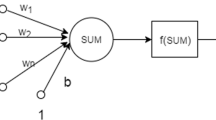Abstract
Recent researches in biomedicine have indicated that the molecular basis of chronic complex diseases can also exist outside the disease-impacted tissues. Differentially expressed genes between different tissues can help revealing the molecular basis of chronic diseases. Therefore, it is essential to develop new computational methods for the integrative analysis of multi-tissues gene expression data, exploring the association between differentially expressed genes in different tissues and chronic disease. To analysis of intra- and inter-tissues’ differentially expressed genes, we designed an integrative enrichment analysis method based on perceptron (IEAP). Firstly, we calculated the differential expression scores of genes using fold-change approach with intra- and inter- tissues’ gene expression data. The differential expression scores are seen as features of the corresponding gene. Next, we integrated all differential expression scores of gene to get differential expression enrichment score. Finally, we ranked the genes according to the enrichment score. Top ranking genes are candidate disease-risk genes. Computational experiments shown that genes differentially expressed between striatum and liver of normal samples are more likely to be Huntington’s disease-associated genes, and the prediction precision could be further improved by IEAP. We finally obtained five disease-associated genes, two of which have been reported to be related with Huntington’s disease.
Access this chapter
Tax calculation will be finalised at checkout
Purchases are for personal use only
Similar content being viewed by others

References
Ross, C.A., et al.: Huntington disease: natural history, biomarkers and prospects for therapeutics. Nat. Rev. Neurol. 10(4), 204 (2014)
Seredenina, T., Luthicarter, R.: What have we learned from gene expression profiles in huntington’s disease? Neurobiol. Dis. 45(1), 83 (2012)
Wang, X., Huang, T., Bu, G., Xu, H.: Dysregulation of protein trafficking in neurodegeneration. Mol. Neurodegener. 9(1), 31 (2014)
Difiglia, M., et al.: Aggregation of huntingtin in neuronal intranuclear inclusions and dystrophic neurites in brain. Science 277(5334), 1990 (1997)
Kugler, K.G., Mueller, L.A.J., Graber, A., Dehmer, M.: Integrative network biology: graph prototyping for co-expression cancer networks. PLoS ONE 6(7), 22843 (2011)
Liu, Z.P.: Identifying network-based biomarkers of complex diseases from high- throughput data. Biomark. Med. 10(6), 633–650 (2016)
Xulvibrunet, R., Li, H.: Co-expression networks: graph properties and topological comparisons. Bioinformatics 26(2), 205–214 (2010)
Ray, M., Zhang, W.: Analysis of alzheimer’s disease severity across brain regions by topological analysis of gene co-expression networks. BMC Syst. Biol. 4(1), 136 (2010)
Ideker, T., Krogan, N.J.: Differential network biology. Mol. Syst. Biol. 8(1), 565 (2012)
Gwinner, F., et al.: Network-based analysis of omics data: the lean method. Bioinformatics 33(5), 701–709 (2017)
Huang, D.W., Sherman, B.T., Lempicki, R.A.: Systematic and integrative analysis of large gene lists using david bioinformatics resources. Nat. Protoc. 4(1), 44 (2009)
Bevilacqua, V., Pannarale, P., Abbrescia, M., Cava, C., Paradiso, A., Tommasi, S.: Comparison of data-merging methods with SVM attribute selection and classification in breast cancer gene expression. BMC Bioinformatics 13(S7), 9 (2012)
Maulik, U., Mukhopadhyay, A., Chakraborty, D.: Gene-expression-based cancer subtypes prediction through feature selection and transductive SVM. IEEE Trans. Bio-Med. Eng. 60(4), 1111–1117 (2013)
Jiang, X., Zhang, H., Zhang, Z., Quan, X.: Flexible non-negative matrix factorization to unravel disease-related genes. IEEE Trans. Comput. Biol. Bioinf. 1(1), 1–11 (2018)
Wang, H.Q., Zheng, C.H., Zhao, X.M.: jNMFMA: a joint non-negative matrix factorization meta-analysis of transcriptomics data. Bioinformatics 31(4), 572 (2015)
Jiang, X., Zhang, H., Duan, F., Quan, X.: Identify huntington’s disease associated genes based on restricted boltzmann machine with RNA-seq data. BMC Bioinformatics 18(1), 447 (2017)
Liang, M., Li, Z., Chen, T., Zeng, J.: Integrative data analysis of multi-platform cancer data with a multimodal deep learning approach. IEEE/ACM Trans. Comput. Biol. Bioinf. 12(4), 928–937 (2015)
Battle, A., Brown, C.D., Engelhardt, B.E., Montgomery, S.B.: Genetic effects on gene expression across human tissues. Nature 550(7675), 204–213 (2017)
Tan, M.H., et al.: Dynamic landscape and regulation of RNA editing in mammals. Nature 550(7675), 249–254 (2017)
Tukiainen, T., et al.: Landscape of X chromosome inactivation across human tissues. Nature 550(7675), 244 (2017)
Li, X., et al.: The impact of rare variation on gene expression across tissues. Nature 550(7675), 239–243 (2016)
Hong, F., Breitling, R.: A comparison of meta-analysis methods for detecting differentially expressed genes in microarray experiments. Bioinformatics 24(3), 374 (2008)
Hanley, J.A., Mcneil, B.J.: The meaning and use of the area under a receiver operating characteristic (ROC) curve. Radiology 143(1), 29 (1982)
Langfelder, P., et al.: Integrated genomics and proteomics de ne huntingtin cag length-dependent networks in mice. Nat. Neurosci. 19(4), 623 (2016)
Yamamoto, S., et al.: A drosophila genetic resource of mutants to study mechanisms underlying human genetic diseases. Cell 159(1), 200–214 (2014)
Author information
Authors and Affiliations
Corresponding author
Editor information
Editors and Affiliations
Rights and permissions
Copyright information
© 2019 Springer Nature Switzerland AG
About this paper
Cite this paper
Jiang, X., Pan, W., Chen, M., Wang, W., Song, W., Lin, G.N. (2019). Integrative Enrichment Analysis of Intra- and Inter- Tissues’ Differentially Expressed Genes Based on Perceptron. In: Huang, DS., Jo, KH., Huang, ZK. (eds) Intelligent Computing Theories and Application. ICIC 2019. Lecture Notes in Computer Science(), vol 11644. Springer, Cham. https://doi.org/10.1007/978-3-030-26969-2_9
Download citation
DOI: https://doi.org/10.1007/978-3-030-26969-2_9
Published:
Publisher Name: Springer, Cham
Print ISBN: 978-3-030-26968-5
Online ISBN: 978-3-030-26969-2
eBook Packages: Computer ScienceComputer Science (R0)



